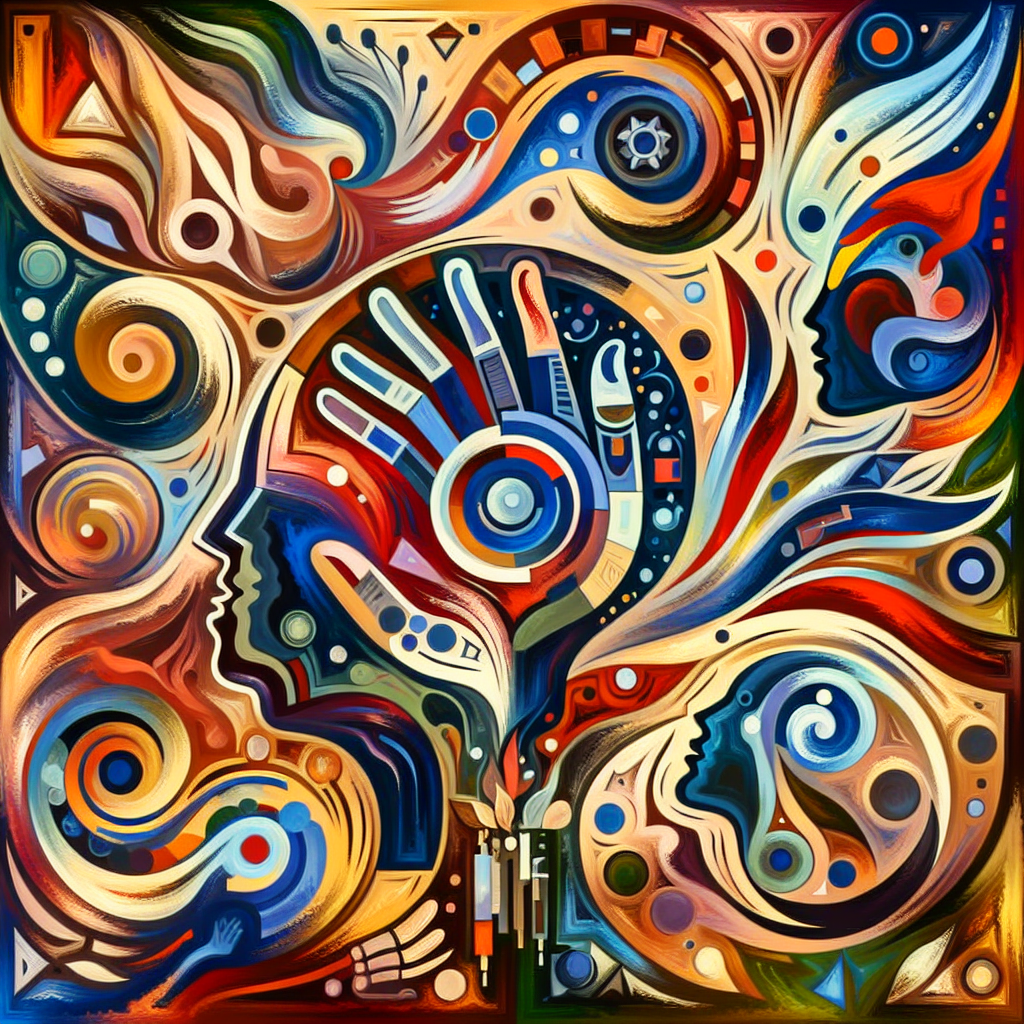Have you ever wondered about the different stages of sexual pleasure? Well, look no further! In this article, we will explore the fascinating journey of pleasure, unraveling the five stages that many individuals experience. Whether you’re curious about your own experiences or simply seeking knowledge, join us as we take a friendly and informative exploration into the captivating world of sexual pleasure.
Foreplay
Definition and Importance
Foreplay refers to the activities and actions that individuals engage in before sexual intercourse. It plays a crucial role in creating sexual excitement, enhancing intimacy, and increasing pleasure between partners. Foreplay is not simply a precursor to the main event, but rather an essential part of the entire sexual experience. It involves physical and emotional stimulation, setting the stage for a more satisfying and enjoyable sexual encounter.
Foreplay holds significant importance as it helps to build anticipation and desire before engaging in sexual activities. It allows partners to connect on a deeper level, both emotionally and physically. Through foreplay, couples can explore each other’s bodies, preferences, and fantasies, creating a safe and comfortable space for sexual exploration. It also serves as a mechanism for arousal, promoting the necessary physiological changes in the body to prepare for sexual intercourse.
Types of Foreplay
Foreplay encompasses a wide range of activities that can vary based on personal preferences and comfort levels. Some common types of foreplay include:
-
Kissing and Touching: Gentle kissing and caressing can be an excellent way to initiate foreplay, stimulating nerve endings and increasing sensitivity.
-
Oral Stimulation: Oral sex, both giving and receiving, can be highly pleasurable and intimate. It allows for the exploration of erogenous zones and heightens sexual arousal.
-
Massage: A sensual massage using oils or lotions can not only relax the body but also awaken the senses and create a sense of intimacy.
-
Dirty Talk: Engaging in sexual fantasies or expressing desires verbally can be a form of foreplay that enhances mental stimulation and connection.
-
Role-Playing: Taking on different personas or characters can help add excitement, novelty, and anticipation to the sexual experience.
-
Use of Sex Toys: Incorporating sex toys into foreplay can intensify sensations and introduce new avenues of pleasure.
Remember that the most important aspect of foreplay is open communication and consent. Each partner should feel comfortable expressing their boundaries, desires, and comfort levels when engaging in these activities.
Benefits
Foreplay offers a multitude of benefits for both individuals and couples. Some key benefits include:
-
Enhanced Arousal: Engaging in foreplay helps to stimulate the body and increase blood flow, preparing it for sexual intercourse. This can lead to heightened arousal and more intense sensations during sexual activity.
-
Emotional Connection: Foreplay allows partners to connect on a deeper emotional level, fostering trust, intimacy, and mutual understanding. Through exploration and communication, couples can build a stronger bond and enhance their overall relationship.
-
Increased Lubrication: Physical stimulation during foreplay prompts the body to produce natural lubrication, making penetration more comfortable and reducing the risk of discomfort or pain.
-
Longer-lasting Sexual Experience: By extending the duration of sexual activities through foreplay, couples can enjoy a longer and more satisfying sexual experience. This can lead to increased pleasure and a greater sense of fulfillment.
-
Heightened Orgasms: Proper arousal and stimulation during foreplay can lead to more intense and pleasurable orgasms. By focusing on different erogenous zones and incorporating different techniques, partners can experience heightened climax and satisfaction.
Foreplay is an essential component of sexual pleasure and can greatly enhance the overall sexual experience. It is a time to explore, communicate, and connect with your partner, laying the foundation for a more fulfilling and enjoyable encounter.

Arousal
Definition and Physical Changes
Arousal refers to the state of sexual excitement that occurs in response to sexual stimuli, thoughts, or sensations. It involves both physiological and psychological changes in the body, preparing it for sexual activity. When you become aroused, your body undergoes various physical changes to facilitate sexual pleasure and readiness for intercourse.
Physically, arousal leads to increased blood flow to the genital area, causing the penis to become erect and the clitoris to swell. The vagina also experiences increased lubrication, making penetration more comfortable. Breathing and heart rate may become faster, and the skin may flush or become more sensitive to touch. These physiological changes are vital in preparing the body for sexual interaction.
Psychological Components
In addition to the physical changes, there are also psychological components involved in arousal. Mental and emotional factors play a significant role in determining a person’s level of sexual excitement. These can include fantasies, emotions, memories, and the level of comfort and trust experienced with a partner.
Thoughts and visual stimuli can trigger arousal, as can touch and the overall atmosphere of the sexual encounter. Feeling desired, experiencing emotional intimacy, and being in a safe and non-judgmental environment all contribute to psychological arousal.
Factors Affecting Arousal
Several factors can influence arousal levels in individuals. These factors vary from person to person and can differ based on various circumstances. Some common factors that may impact arousal include:
-
Stress and Anxiety: High levels of stress or anxiety can dampen sexual desire and hinder the ability to become aroused. It is essential to create a relaxed and calm environment to minimize these effects.
-
Relationship Dynamics: The quality of the relationship and emotional connection with a partner plays a significant role in arousal. Trust, intimacy, and clear communication can enhance sexual desire and lead to increased arousal.
-
Physical Well-being: Physical health and overall well-being can impact arousal levels. Factors such as fatigue, medication, hormonal changes, and underlying medical conditions can affect sexual desire and arousal.
-
Personal Preferences: Each individual has their own unique preferences when it comes to arousal. Some may be more responsive to certain stimuli, fantasies, or activities. Understanding and respecting these preferences can enhance sexual satisfaction.
-
External Stimuli: Surrounding environment and stimuli, such as romantic settings, erotic literature, or visual media, can contribute to arousal. Creating a conducive atmosphere can help trigger arousal and enhance the sexual experience.
It is important to remember that arousal levels can vary from person to person and from one sexual encounter to another. Open communication, understanding, and a willingness to explore each other’s desires can help create a fulfilling and pleasurable sexual experience.

Plateau
Definition and Physical Changes
The plateau phase is the second stage of the sexual response cycle, following arousal. During this phase, sexual pleasure continues to intensify, leading up to the eventual climax or orgasm. The plateau phase is characterized by sustained sexual tension, increased physiological activity, and further bodily changes in preparation for orgasm.
Physically, the body’s responses during the plateau phase may include increased heart rate, breathing, and blood pressure. Muscles throughout the body may tense up, preparing for the release of orgasmic contractions. In men, the testicles may retract closer to the body, while in women, the inner walls of the vagina may increase in swelling and sensitivity.
The plateau phase allows for the accumulation and buildup of sexual tension, heightening the pleasure and intensity of the impending orgasm. It is a vital stage in the sexual response cycle, contributing to the overall satisfaction derived from a sexual encounter.
Pleasure Intensification
The plateau phase is accompanied by a significant increase in pleasure and sensation. As sexual tension continues to build, the body becomes more attuned to pleasure and stimulation. Sensations become more intense, and small movements or touches can lead to heightened pleasure and arousal.
During this phase, individuals may experience increased sensitivity in erogenous zones, where even gentle stimulation can evoke intense pleasure. Partners can explore different techniques, like varying pressure, speed, or rhythm, to maximize pleasure during the plateau phase and enhance the overall sexual experience.
Communication and Consent
Effective communication and consent are essential during the plateau phase to ensure a positive and enjoyable sexual encounter. This includes verbal and non-verbal cues between partners to convey comfort levels, desires, and boundaries.
Openly discussing preferences and seeking consent before engaging in any specific activities is crucial. Consent should be enthusiastic, ongoing, and freely given by all parties involved. By communicating openly and honestly, partners can ensure that each other’s needs and desires are respected, creating a safe and pleasurable sexual environment.
Building trust and empathy through open communication can deepen intimacy and enhance the overall experience during the plateau phase and beyond.

Orgasm
Definition and Physical Changes
Orgasm is the climactic stage of sexual pleasure, representing the peak of sexual arousal and pleasure. It involves intense physical and emotional sensations, leading to a release of sexual tension and a sense of euphoria. The orgasmic phase is characterized by rhythmic contractions of the pelvic muscles, accompanied by intense pleasure and a state of heightened sensitivity.
Physically, during orgasm, the body experiences involuntary muscle contractions in the genital, pelvic, and sometimes even whole body area. In men, this leads to ejaculation, the release of semen from the penis. Women may experience contractions of the uterus and changes in the vaginal wall, enhancing pleasure. Heart rate, blood pressure, and breathing reach their peak during orgasm.
The physical changes experienced during orgasm contribute to the intense pleasure and release of sexual tension. These sensations can vary in intensity and duration from person to person and even between different sexual encounters.
Types of Orgasms
Orgasms can be experienced in various ways, depending on the individual and their unique physiology. While the physical changes during orgasm are similar, the sensations and specific pleasure points can differ. Some common types of orgasms include:
-
Clitoral Orgasms: Clitoral stimulation is often the most reliable way to achieve orgasm for many individuals with a clitoris. Pleasurable sensations are usually focused in the clitoral area.
-
Vaginal Orgasms: Vaginal orgasms are typically achieved through stimulation of the G-spot, located on the front wall of the vagina. These orgasms may feel deeper and more internal.
-
Combination Orgasms: Many individuals experience orgasms that involve a combination of clitoral and vaginal stimulation. These orgasms can be incredibly intense and pleasurable.
-
Anal Orgasms: Stimulation of the anus and surrounding area can also lead to orgasms for some individuals. This may be achieved through manual stimulation, anal penetration, or through indirect stimulation from other erogenous zones.
It is important to remember that the experience and preference for orgasm can vary greatly from person to person. Each individual’s sexual response is unique, and exploration through open communication with a partner can help discover what brings the most pleasure.
Health Benefits
Apart from the immediate pleasure and satisfaction derived from orgasm, there are several health benefits associated with regular orgasms:
-
Stress Reduction: Orgasms release endorphins, which are natural mood boosters. They can help reduce stress, anxiety, and promote a sense of relaxation and well-being.
-
Pain Relief: The release of endorphins during orgasm can also provide temporary relief from pain, including headaches, menstrual cramps, and muscle tension.
-
Improved Sleep: Orgasms can aid in promoting better sleep by releasing relaxation-inducing hormones and creating a sense of physical and mental relaxation.
-
Cardiovascular Benefits: The increased heart rate during orgasm promotes blood circulation, which is beneficial for cardiovascular health.
-
Strengthened Pelvic Floor Muscles: The rhythmic contractions during orgasm help to strengthen the pelvic floor muscles, reducing the risk of urinary incontinence and promoting bladder control.
It is important to note that orgasms are not the sole focus or measure of sexual pleasure. Every individual’s sexual journey is unique, and the emphasis should be on overall enjoyment, connection, and personal satisfaction.

Resolution
Definition and Physical Changes
The resolution phase is the final stage of the sexual response cycle, occurring after orgasm. During this phase, the body gradually returns to its pre-arousal state. It involves a series of physical changes and sensations as the body and mind transition from a state of heightened arousal back to a state of relaxation.
Physically, the body experiences a decrease in physiological arousal. Heart rate, blood pressure, and breathing gradually return to normal levels. The genital area returns to its pre-aroused state, with the penis becoming flaccid and the clitoris and vulva returning to their usual size and shape.
The resolution phase may also bring about a sense of deep relaxation, contentment, and overall well-being. After orgasm, individuals may feel a sense of emotional and physical release, leading to a natural state of calm and satisfaction.
Emotional Bonding
The resolution phase offers an opportunity for emotional bonding and connection between partners. The release of endorphins during orgasm can foster feelings of closeness and intimacy. Partners may experience a sense of emotional vulnerability, trust, and a deepened sense of connection.
Engaging in post-sexual cuddling, gentle touch, and intimate conversation can further enhance the emotional bonding experience during the resolution phase. It allows partners to bask in the afterglow of orgasm, promoting a sense of emotional fulfillment and security within the relationship.
Refractory Period
The refractory period is a unique aspect of the resolution phase experienced primarily by those with a penis. It refers to the recovery phase following orgasm when it becomes difficult or impossible to achieve another erection or orgasm for a period of time. The duration of the refractory period can vary significantly among individuals and may range from minutes to hours or even longer.
During the refractory period, it is common for arousal levels to decline significantly. This period allows the body to rest and recover before becoming responsive to sexual stimulation again. It is important to respect and understand this natural process and communicate with your partner about their needs and comfort during this time.
For individuals without a refractory period, the resolution phase may involve a continuation of sexual pleasure or the potential for multiple orgasms. It is crucial to communicate openly with your partner to understand each other’s needs, boundaries, and desires during this phase.
The resolution phase offers an opportunity for emotional bonding, relaxation, and reflection on the shared sexual experience. Enjoying this phase together can help strengthen the connection between partners and build anticipation for future encounters.
In conclusion, understanding the various stages of sexual pleasure is essential for fostering a healthy and satisfying sexual relationship. Foreplay sets the stage, builds anticipation, and enhances intimacy. Arousal involves both physical and psychological components, leading to heightened desire and excitement. The plateau phase intensifies pleasure and prepares the body for orgasm. Orgasm brings about intense pleasure, release, and various health benefits. Finally, the resolution phase allows for emotional bonding, relaxation, and reflection.
By embracing and exploring these stages, individuals and couples can cultivate a deeper understanding of their own desires and preferences and create a more fulfilling and enjoyable sexual experience. Open communication, consent, and respect for boundaries are key in navigating each stage and ensuring a pleasurable and consensual encounter for all parties involved. Ultimately, sexual pleasure is a personal and unique journey, and it is essential to prioritize mutual satisfaction, pleasure, and emotional well-being.


